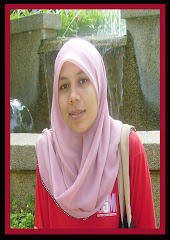The Uniform Building By Laws(1984) under the Street, Drainage and Building Act 1974 was amended in 1990. It makes it mandatory for all new building to have facilities and amenities for people with disabilities. Subsequently, The Malaysian Standard (MS 1184:91) Code of Practice for Access for the Disabled People to Public Buildings was drawn up to provide the specifications for the essential provisions that need to be incorporated into such buildings. However, due to lack of monitoring the enforcement of the Act and Code of Practice, many buildings are still inaccessible to people with disabilities. Therefore we recommend the following;
- The government should consider measures to monitor the enforcement of the laws regarding barrier-free access of the disabled to public buildings. All public places should have appropriate toilet facilities and adequate parking spaces. Roads, pavements, pathways and walkways, pedestrian crossing (with traffic lights and bleeps) must made more accessible for people with disabilities.
- More parking lots in the shopping complexes should be allocated to the disabled car drivers and motorbike users.
2. Recommendations for Accessible Transportation
Lack of accessible transportation appears to be greatest problem faced by people with disabilities who have mobility impairments. It should be recognised that providing accessible transportation benefits everybody, especially the growing number of elderly people and also parents with young children. We urge the government to introduce a policy to provide accessible transportation in phases, particularly in urban areas. We therefore recommend the following :
- Public transport should be made user-friendly. For example, wheelchair users have difficult coping with fast closing doors of the commuter trains. The public buses should revert to the old system where all seats face one way so that the seats railings are easily accessible to guide blind passengers. The railings on the roof should be easily reached by disabled standing passengers and the seats themselves should be lower in height for better balance especially during emergency brakes . Although there are seats reserved for people with disabilities, this policy must be enforced and special services for people with disabilities must be made available.
- The local authorities should consider the users bigger taxis to accommodate both wheelchair and passenger. A coupon system with a 50% discount for people with disabilities using taxi service should be introduced until the public transport is more accessible to the people with disabilities.
- The introduction of a special service at airports to ensure the safety of wheelchair and luggage for disabled passengers.
- The government should encourage people with disabilities to buy their own cars by removing the excise duty imposed on cars ( at least those of locally produced cars).It is not only disabled persons that benefit.
- Incentives should be offered to transport operators for providing accessible vehicles.
- Enact standards for accessible public transport vehicles and transport infrastructure based on universally accepted practice but appropriate for conditions and users in Malaysia; then require new public transport vehicles and infrastructure to comply with these standards.
- Require transport operators to provide low-floor buses in urban areas where conditions are suitable.
- Train and sensitise staff of transport vehicles at all levels to be aware of the special needs of disabled person and to know how to assist them appropriately.
- Enforce the design standards for an accessible external built environment which is vital to provide the link between accessible transportation and accessible buildings.
They will be able to develop a higher level of self-reliance as well as economic and social independence. The families of people with disabilities will have access to some financial relief while more opportunities will be created for people with disabilities in education, training and employment. Someday soon it is anticipated that people with disabilities will be able to finally enjoy "full participation and equality" in society through economic and social integration.
















































No comments:
Post a Comment